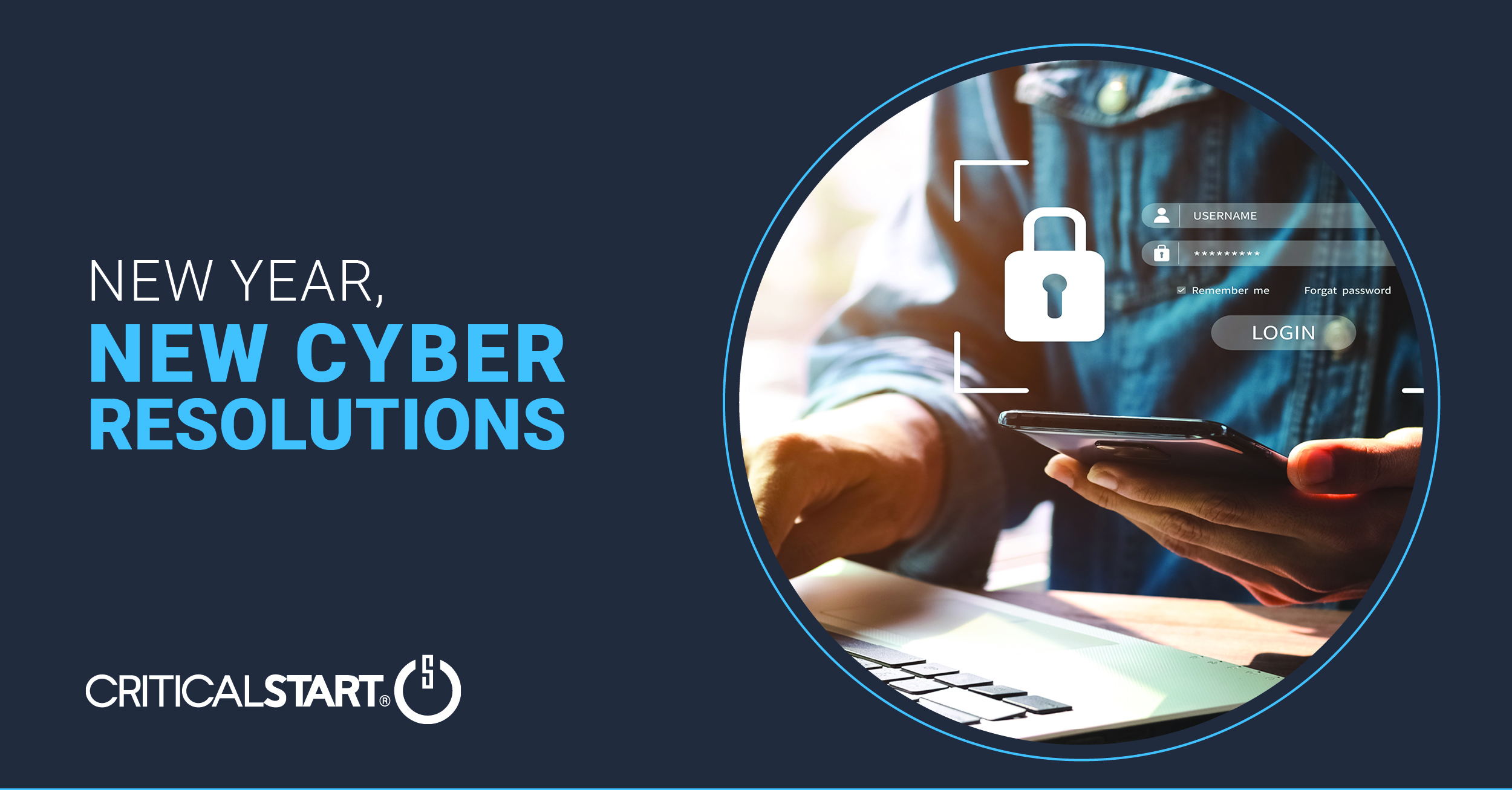New Year, New Cyber Resolutions (and Same Phishing Techniques)

The recent holiday season brought an uptick in well-crafted, targeted phishing attacks. In 2021, the industry saw a 30% increase in ransomware attacks during the holidays, and a 70% increase in attempted ransomware attacks (MUO) during November and December. The increase is not surprising, since attackers know that people are distracted during the holidays and are more likely to overlook warning signs that an email isn’t from a trusted sender. With a new year before us, now is the perfect time to start fresh and create some new cybersecurity resolutions with your organization.
I always see an entire company as being security officers, and empowering your workforce to recognize phishing and other tactics as we head into 2023 is crucial – especially when 23% of data breaches are caused by human error. (IBM) While a strong cybersecurity infrastructure is essential, humans are often on the front line.
How to Recognize Phishing Attempts
It’s important to note that targeted phishing attacks are challenging from a defense perspective because they are nearly impossible for an automated system to catch. The email often looks legitimate, using domain names that may match your organization. The attacker’s goal is to pull targets into a conversation that will ultimately result in asking for access, information, or support in a financial transaction. One example of this is managers at your organization receiving a phishing email or a text message asking to approve an invoice or transfer funds. The email or text may even look like it is coming from their boss, or the company CEO.
Many requests are coming via SMS message, and junior employees who do not know their CEO or senior leadership representative’s cell phone number may be susceptible to these attempts. When receiving a text message from someone, it is best to follow up with an email to a known good address to verify the request prior to taking any action.
In addition to routine cybersecurity training sessions with your workforce, help employees to implement new cybersecurity resolutions to better protect themselves and your company from an attack. Here is a quick checklist to help staff evaluate if the email they received is legitimate, or a scam.
Phishing Checklist:
- Do you see an “external” banner in an email? Review the sending address very carefully, and the body of the email for anything suspicious. Don’t forget to hover over any links (without clicking) to view the URL.
- Is the sender’s email address unfamiliar to you or from a domain different than what you would expect? (For example: A personal “Gmail” instead of corporate email, or is there a misspelling in the domain name?)
- Is the subject matter something you would normally discuss with the sender? Attackers often make it appear that the email is coming from a sender known to you, though the subject will often be unusual.
- Is the email from your boss or a senior executive with an unexpected ask?
- Is the sender creating a sense of urgency, encouraging you to act immediately? (For example: “Do this for me ASAP.”)
- Is there a financial motivation, such as a promise of payment or a request for financial information?
If you answer “yes” to one or more of these questions, use caution and report the message as malicious to your security team. When in doubt, it is always best for employees to ask your security team directly while being assured that they won’t feel judged or embarrassed for doing the right thing.
Cybersecurity is always evolving, which constantly gives us new opportunities to better protect ourselves and organizations. To help prepare your team and workforce for the new year, consider some of these Cyber Resolutions.
Cyber Resolutions for the New Year
- Cybersecurity training: Help continued learning become a priority by scheduling regular cyber training sessions with your employees. Doing a “Lunch & Learn” is an easy way to include folks in the office or working from home.
- Encourage MFA: Require that your entire workforce use MFA for all work accounts – and suggest that they use it for personal accounts outside of work as well.
- Simplify your breach prevention to stop business disruption by considering Managed Detection and Response (MDR) providers.
As you gear up for the new year, our team is here with 24x7x365 support to keep businesses like yours thriving. If you’re looking to extend your threat protection without over-extending your team – then you’ve come to the right place. We know you have a lot of good security solutions to choose from. And while they’re good, we’re better. We’d love to tell you why.

In his role as the CISO, George defines and drives the strategic direction of corporate IT, information security and compliance initiatives for the company, while ensuring adherence and delivery to our massive growth plans. George brings more than 20 years of experience with technology, infrastructure, compliance, and assessment in multiple roles across different business verticals.
You may also be interested in…
RESOURCE CATEGORIES
- Buyer's Guides(1)
- Consumer Education(39)
- Consumer Stories(2)
- Cybersecurity Consulting(4)
- Data Breaches(15)
- Data Privacy(43)
- Incident Response(2)
- Interview(51)
- MDR Services(59)
- MobileSOC(6)
- News(5)
- Press Release(101)
- Research Report(9)
- Security Assessments(2)
- Thought Leadership(19)
- Threat Hunting(3)
- Video(1)
- Vulnerability Disclosure(1)